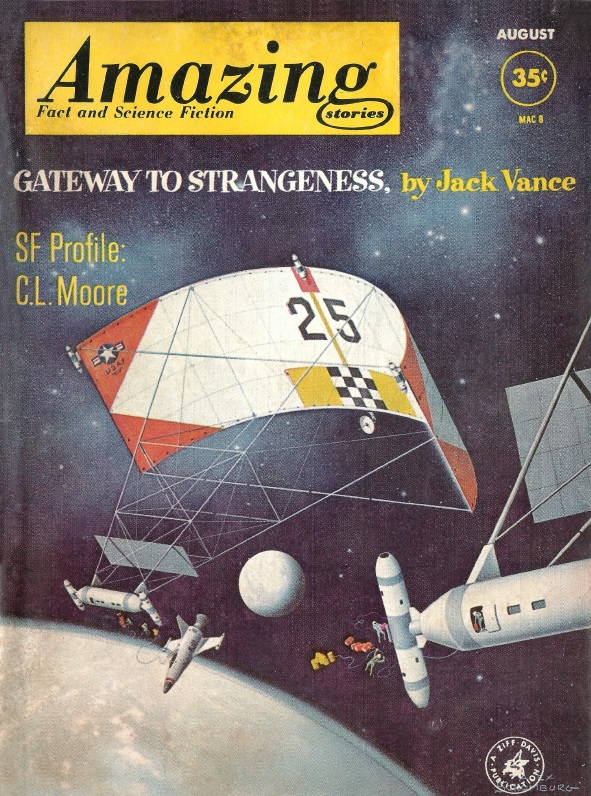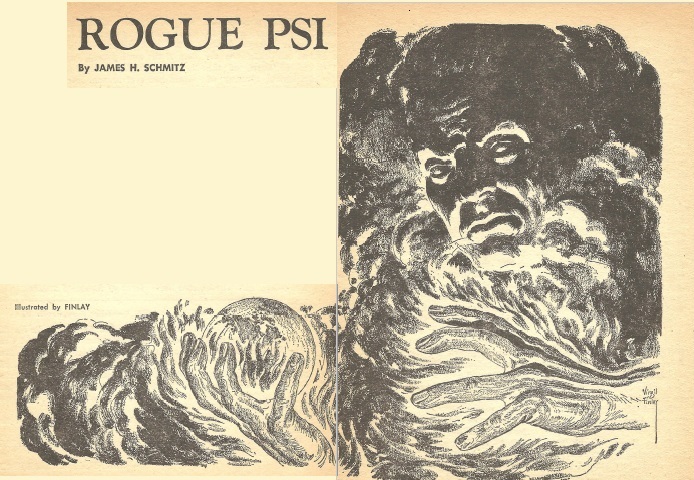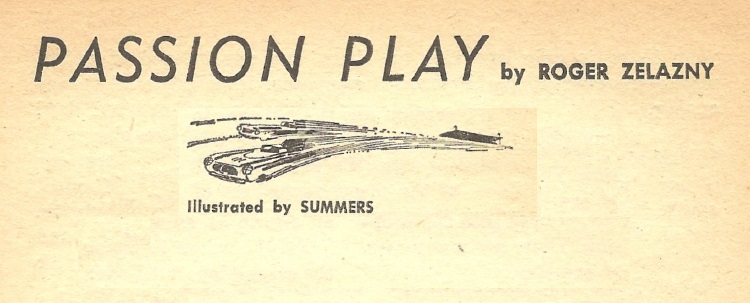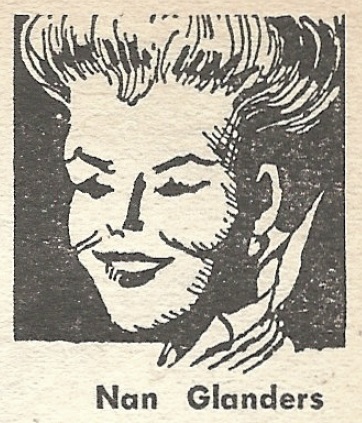
by John Boston
Summertime, and the living is . . . hot and sticky, here in the near-South. Also fairly boring, if one is not much interested in such local rustic amusements as hayrides and frog-gigging (if you have to ask, you don’t want to know.) There’s no better time to find a comfortable hiding place and read science fiction magazines, except possibly for all the other times. Of course the season—any season—doesn’t guarantee merit, and the August 1962 Amazing is the usual mixed bag.

The issue leads off with the cover story Gateway to Strangeness by Jack Vance, which contrary to its title goes out of its way to avoid strangeness. It’s the one about the martinet skipper who treats his young trainee sailors with brutal sternness—not to mention sabotage to create life-threatening problems for them to solve—but it’s good for them and makes men out of them, except for the one who’s dead. In this case it’s a solar sail ship and not a windjammer, but the premise is just as tired regardless of medium. The most interesting aspect is the description of operating a spaceship propelled by the “wind” of light and particles emanating from the Sun. For a Vance story, that’s a judgment of failure: his talents lie elsewhere than hardware (see The Moon Moth in last year’s Galaxy and The Miracle Workers a few years ago in Astounding), but he seems determined sometimes to play to his weaknesses. Two stars.

The other novelet here is James H. Schmitz’s Rogue Psi, in which humanity (via the members of a secret psi research project) confronts a “hypnotizing telepath” who can control or impersonate anyone, and has been interfering with humanity, and in particular its efforts to get off-planet, for centuries. The showdown is brought about via “diex energy,” which amplifies psi powers. This is all moonshine, but Schmitz is an engaging writer and has a knack for physical and experiential description that make his account of psychic goings-on better grounded than others we could name—none of the familiar “he stiffened his mind shield as Zork lashed out” sort of thing. The deus ex machina, or ex hat, resolution even goes down smoothly. Three stars for capable, even lively, deployment of material that otherwise would border on cliche.

In between is the short story Passion Play by Roger Zelazny—who? New writer, I guess, and the story is a heavily satirical vignette of a sort common from new writers—that is, it’s only barely a story. In the future, it appears, robots have inherited the Earth, and one of them tells his story (in the present tense, no less), which involves ceremonially reenacting a crash from a famous auto race of the past (this one at Le Mans). The guy is a glib writer, though—“After the season of Lamentations come the sacred stations of the Passion, then the bright Festival of Resurrection, with its tinkle and clatter, its exhaust fumes, scorched rubber, clouds of dust, and its great promise of happiness”—so we may hear from him again, more substantially. Two stars, basted with promise.

One hopes not to hear further from Beta McGavin, the probably pseudonymous author of Dear Nan Glanders, an advice column from the future, a silly space-filler of which the best that can be said is that it distracts from Benedict Breadfruit, whose exploits continue here as well. One star.

That’s it for the fiction contents, except for the second installment of Keith Laumer’s A Trace of Memory, to be discussed when it is completed next month. As for non-fiction, Sam Moskowitz contributes C.L. Moore: Catherine the Great, another in his “SF Profiles” series, with considerable interesting biographical detail and more attention than usual for Moskowitz to her more recent work (possibly because there is so little of it). Four stars.
But overall, this magazine is getting a little exasperating. The year began well with several excellent stories by J.G. Ballard, Brian Aldiss, and Mark Clifton, but the streak did not continue. For some months now the magazine’s high points have mostly been competent product like this month’s Schmitz story, nice tries like Purdom’s The Warriors, and trifles with promise like Zelazny’s story in this issue. Enough promise; time for some more delivery.

Another spot on review from John. I thought both the novelets were disappointing. They both read like Analog rejects. Quite right that the best piece was the C L Moore biography. I will keep my powder dry on the Laumer.
Interesting that becoming a fixture in the magazine doesn't stop S E Cotts jumping all over Ballard's "The Wind from Nowhere".
I remember this issue well, and these days think about it in terms of the Jack Vance take on solar sails, which appeared the same year Robert Forward began writing about beamed propulsion in the journal Missiles and Rockets. Always loved Vance…
I think you pretty much hit the nail on the head about this issue.
"Gateway to Strangeness" (a title which seems to have nothing to do with the story) is surprisingly mundane coming from an author best known for exotic, imaginative concepts. Is this really the same author who just gave us "The Moon Moth" and "The Dragon Masters"?
I liked "Rogue Psi" even less than you did. I found it talky (after an opening with some interesting technology) and tedious.
"Passion Play" was actually my favorite story in a weak issue. It was a unique concept, and it was short enough not to wear out its welcome. Let's see more from this Zelazny (which sounds like a pseudonym to me.)
The less said about "Dear Nan Glanders" the better.
Disappointing to hear about Vance. I won't bother reading it — if John and Vic agree, then it must be true.
Even as a big Jack Vance fan, I was disappointed with "Gateway to Strangeness." As others noted, it was very unlike his usual work, and not just in characterization; the plot, such as it was, wasn't particularly strong either. It was also pretty long for a short story, and felt even longer as it ground along to its end.
I hope this was one of his older stories that he managed to sell on the strength of his reputation, and not a signal that he's changing his style.
"A Trace of Memory" is shaping up well so far. Laumer's stories all move right along, even if it's hard to tell exactly where he's going yet. I'm going to reserve judgement until it's complete.
"Passion Play" was a little too artsy for me to enjoy. The editors probably picked Zlezny guy's story off the slush pile because it was the right length to fill a hole in the issue. I doubt we'll see any more from him, at least under that name.
The Schmitz story… for me, his stories seem to fall into two categories now, "okay" and "boring." This one, unfortunately, was boring. He used to be able to spin a decent yarn even when doing a fluff story, but either he's not doing that any more or my tastes have changed.
I probably sound like I hate everything nowadays. I found one of my 1949 issues while cleaning out the garage the other day; the ratio of good stories to bad was about the same, in my opinion. Some of it is me; I'm a grown man now, and I've been reading science fiction for a long time, and the "sense of wonder" years have passed. Some of the stuff that I thought was wonderful when I was a teen I find unreadable now. But there are lots of people out where who are encountering those sorts of stories for the first time, and are just as excited by them now as I was then. But… in 1949 there were, what, a dozen SF/fantasy magazines? And half that now? And even more people writing new stories? I would expect the quality – as in a coherent story, with a beginning, middle, end, and a plot – to have gone up some, as the editors have a larger pool of good stories to choose from.
Mrs. TRX, being more cynical than I am, has suggested that the problem is either that the editors wouldn't know a well-written story if it bit them in a sensitive place, or they're paying so little the better writers have found more lucrative markets or gone back to work at the sawmill or the button factory.
A lot of good writers have gone to greener pastures to make more… green. I'm digging Galaxy and IF, though…
Whoa! I was ranting about the Vance story to a friend, who said, "Well, yes, didn't you read about it in the latest newsletter? It turns out there are SF fans who mimeograph pages of news and trivia and sell them to each other. I never knew…
Anyway, I'm going to type most of a page in here; the words are supposed to be from Mr. Vance. Watch out for the overstrikes and Wite-Out:
[START]
When Cele Goldsmith was at the home of Poul Anderson she produced a set of cover illustrations which she had bought by the dozen for reasons of economy, and asked those present to formulate stories based upon them. Poul rather gingerly accepted a cover whose subject I forget. Frank Herbert was assigned the representation of a human head, with a cutaway revealing an inferno of hellfire, scurrying half-human creatures, and the paraphernalia of a nuclear power plant. I was rather more fortunate and received a picture purporting to display a fleet of spaceships driven by sun-sails. Theoretically the idea is sound, and space scientists have fang included this concept among their speculations for future planetary voyages. Astrogation of course becomes immensely complex, but by carefully canting the sail and using planetary and/or solar gravities, any region of the solar system may be visited— not always by the most direct route, but neither did the clipper ships sail great-circle routes.
The disadvantages are the complication of the gear and the tremendous expanse of sail— to be measured in square miles—necessary to accelerate any meaningful mass of ship to any appreciable velocity within a reasonable time-span.
Which brings me back to my cover picture. The artist, no doubt for purposes of artistry, had depicted the ships with sails about the size of spinnakers for a twelve-meter, which at Earth radius from the sun would possibly produce as much as one fly-power of thrust. Additionally the sails were painted in gaudy colors, in defiance of the conventional wisdom which specifies that sun-sails shall be flimsy membranes of plastic, coated with a film of reflective metal a few molecules thick. Still, no matter how illogical the illustration, I felt that I must justify each detail by one means or another. After considerable toil I succeeded, with enormous gratitude that I had not been selected to write about the cutaway head which had been the lot of Frank Herbert.
[STOP]
If true, that would explain a lot. A few years ago Asimov wrote about how Campbell would hand him a piece of artwork he'd bought cheap and ask Asimov to write a story around it; apparently Goldsmith is doing the same.
Hm. I wonder what story Herbert conconcted for his picture…
I think I'd rather let prose paint the pictures than pictures paint the prose.